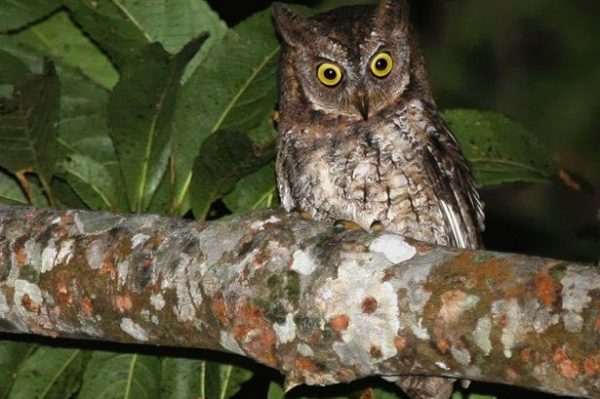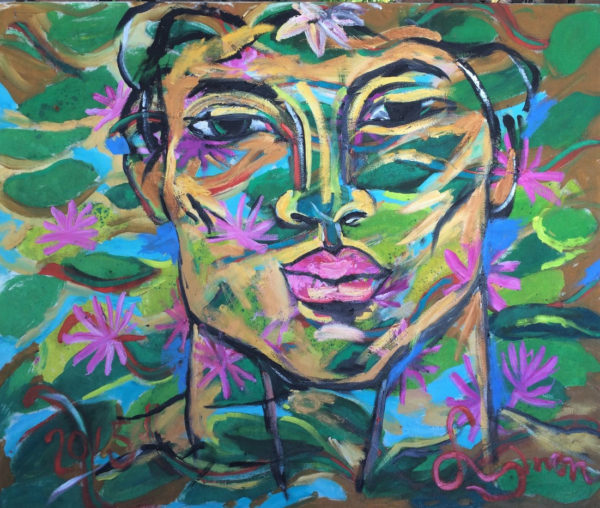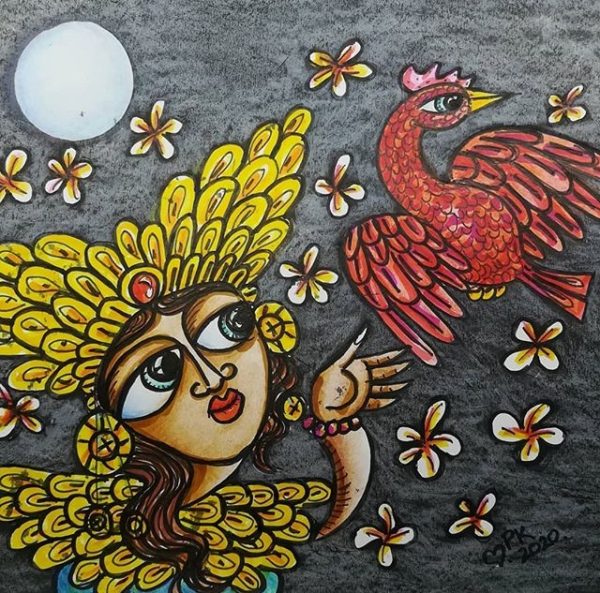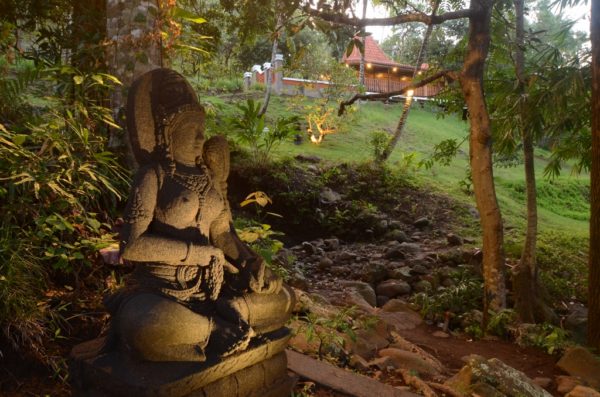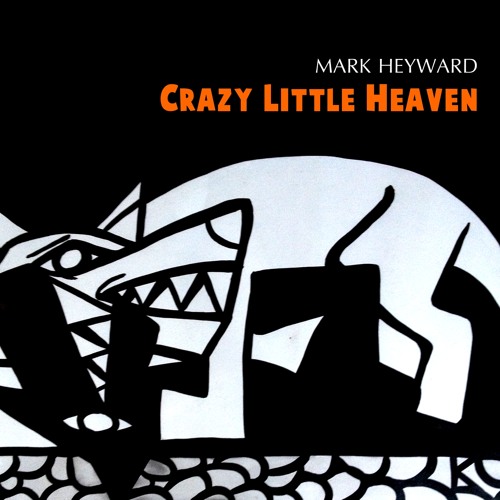The garden is dotted with traditional Javanese stone sculptures sourced from Magelang, near the Borobodur temple in Central Java. Our complex is now guarded by a pair of Dvarapala statues. The two demons sit on small pedestals placed on either side of the entrance gates, there to ward off malevolent spirits. The little Javanese characters are stout and rather chubby, but wear a fierce demeanour, with glaring goggle eyes, protruding fangs, curly hair and splendid moustaches. Both wield fearsome looking clubs. In contrast, across the stream, on either side of the entrance to the joglo cottage, stands a pair of Balinese figures. Beautifully carved from fine, creamy sandstone sourced from Yogya, the figures were created by a father and son in Batubulan village, near Ubud in Central Bali. The statues represent Rama and Sita, lovers from the Ramayana epic.
It took a good day, ten men, two bundles of stout bamboo poles and a length of sturdy rope to manoeuvre the three-hundred-and-fifty-kilogram Javanese Buddha into position, where he now sits on the flat rock by the well beneath the giant waringin fig tree by the creek. A statue of the Javanese goddess Dewi Sri sits among the ferns nearby, the two of them merging into the jungle reserve and adding a little spiritual class to the garden. Not far away, a Hindu stone cow sits, as if chewing her divine cud, surveying the scene and contemplating the universe.
A number of exhibitions have been held in the Studio to promote the work of local artists. A collection of antique Javanese furniture also adds to the mix. Plans are also under way for a major sculptural work to be commissioned from Khan.
